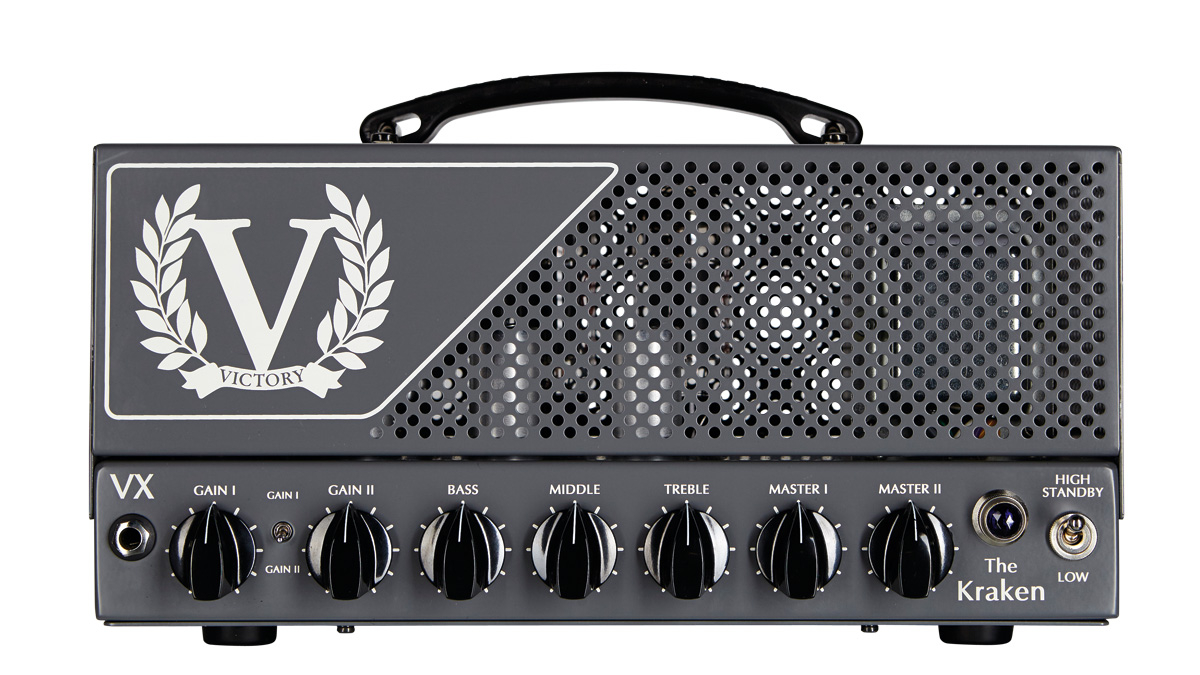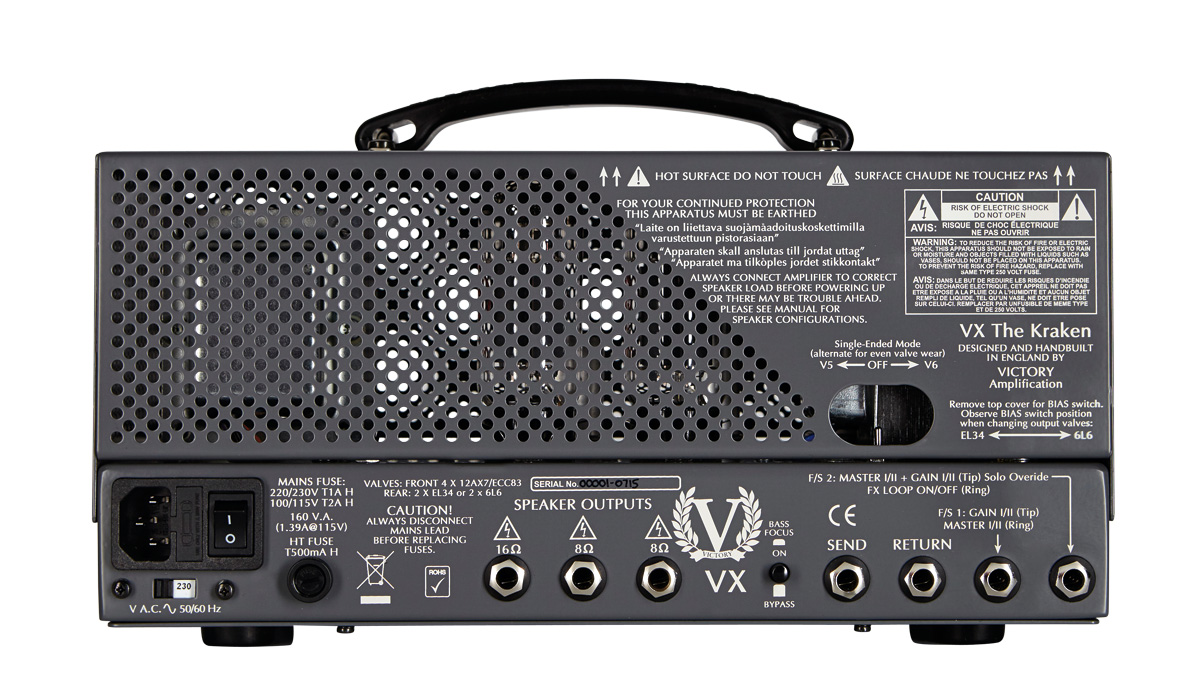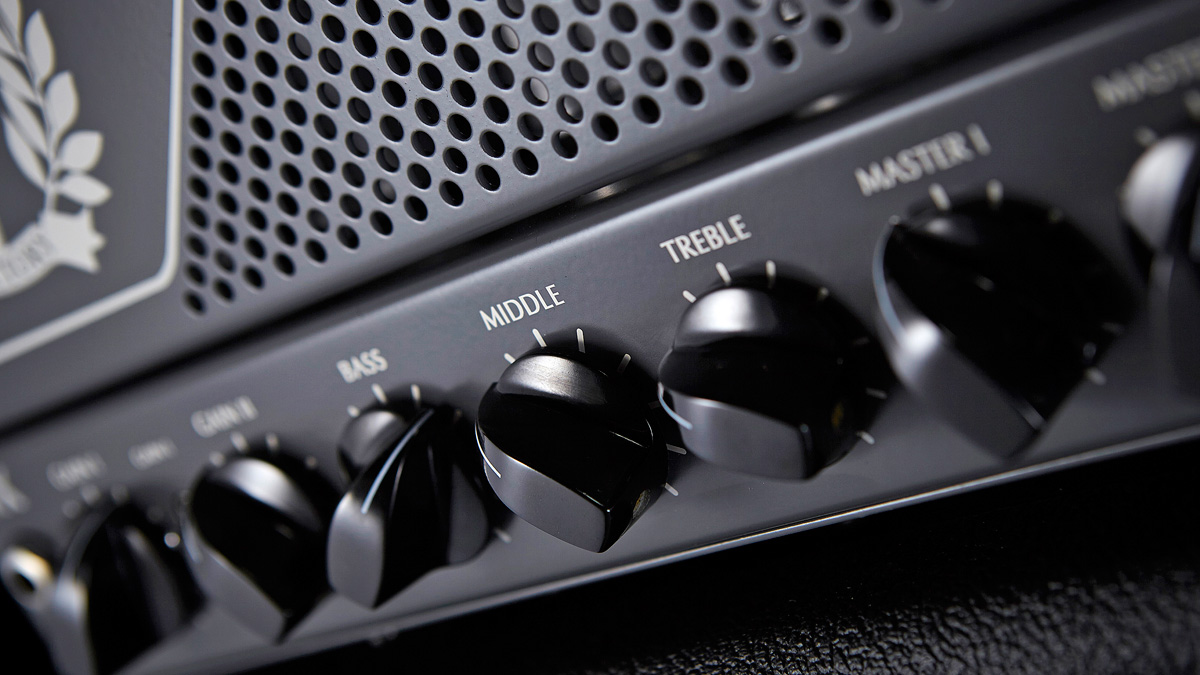MusicRadar Verdict
For the VX to pack such a powerful punch from such a small package makes it one of, if not the best metal amp we've ever played through.
Pros
- +
Price; portability; few amps deliver such powerful metal tones with as much focus and clarity.
Cons
- -
No clean channel, but rolling off your guitar's volume more or less delivers one.
MusicRadar's got your back

Victory VX The Kraken

Victory VX The Kraken

Victory VX The Kraken

Victory VX The Kraken
The baritone/extended range guitarist, while these days extremely well catered for in the guitar market, could be considered neglected when it comes to amps specifically designed with that lower range in mind.
There are many amps that excel and revel in the low-range frequencies pounded through them, but not perhaps many designed in anticipation of sub-D brutality. Indeed, most of the high-profile seven-and eight-string players (as in the case of Meshuggah and Periphery) tend to gravitate towards digital solutions such as the Fractal Audio Axe-FX. With the release of The Kraken, however, Victory has attempted to redress the imbalance.
When setting out to design the amp, Victory's chief designer Martin Kidd was briefed with designing not just a metal amp, but one "that would also suit the players using detuned/baritone instruments, where the low end of the sound comes more from the instrument than the bass produced by the amp's circuitry".
To help ensure this outcome, Victory drafted in Rabea Massaad (guitarist with the band Dorje) to help tweak the amp's voicing as the design process unfolded. Rabea had himself long been working on a setup that best showcased baritone tunings, and his experiments led him to discover his 'magic' formula: a two amp setup consisting of a JCM900 and a 5150 Mk1 (plus two 4x12 cabinets).
With Rabea's input, "the thinking became more focused", says Martin. "My job then was to design two channels that emulated the tones of those amps. For the JCM900, I had to get that classic overdrive using valves, as opposed to the solid-state preamp circuitry in the JCM900, but I had much less real estate on the circuit board to work with, as it needed to fit into a fairly small chassis.
The accentuation of lower-end riffs is ever present, even with the gain turned up full and with a thumping low F# thrown at it
"So, for the 5150 Mk1 sound, I needed to do that with three preamp valves instead of four - there are a total of five 12AX7 valves in the 5150 Mk1 and four in the Kraken but the other 12AX7, in both cases, is the phase splitter for the power amp valves."
Although very candid about the influences, Martin - himself an innovator of some classic amp designs while chief designer at Cornford Amplification - is keen to point out that The Kraken's circuit is original and no "borrowing of other peoples' work took place!"
Want all the hottest music and gear news, reviews, deals, features and more, direct to your inbox? Sign up here.
The result? A two-channel amp, offering two different but classic gain strictures: Gain 1 (or channel 1) for classic British-style overdrive voicing; channel 2 for tightly focused American-style high-gain tones. On the front panel are separate controls for both gains, and to the right of them are three EQ controls, plus two master volumes and a standby switch with the option for high-output and low-output (50 or 15 watts). The front panel is very compact but in no way cluttered.
The rear panel comprises a main on/off switch, three speaker input options, effects loop send and return, and a Bass Focus switch. There are also two separate footswitch inputs enabling you to use the amp in one of two ways: footswitch 1 allows for switching between Gain I and II and between Master I and II, all independently; footswitch 2 allows for switching between Gain I and II, but with Gain I assigned to master I, and Gain II to Master II (as you would find in many modern channel switching amps). The second footswitch also features an effects loop on/off switch.
Feel & Sounds
With the necessary extended-range tools to put The Kraken through its paces - a Vigier seven-string Excalibur and an eight-string Strandberg Boden, with a low F# at the bottom - we plug into channel 1 with everything set to 12 o'clock.
The earlier allusion to the JCM900 seems entirely accurate: authentic- sounding Zeppelin-style classic rock tones are immediately on tap, although slightly less 'raspy' than its reference model. The low end is quite loose and sleazy, exactly as you'd hope for in a channel billed as offering "modded classic master-volume British rock sounds".
The Kraken focuses the low end superbly via the cleverly designed vertical 212 cabinet, which itself plays no mere bit part
The lower range notes are handled quite magnificently and, if as Martin Kidd stated, the objective was for the amp to be "very tight and focused at the low end", then that has been achieved - and in awe-inspiring fashion. Those familiar with chugging away in very low registers will testify that the bass frequency can often be all enveloping: shaking the shelves in your bedroom or sonically brushing the drum-kit in the rehearsal room (much to the annoyance of the drummer!).
The Kraken, though, really does focus that low end superbly via the cleverly designed vertical 212 cabinet, which itself plays no mere bit part.
Channel 2, if based on the 5150, promises to be quite the powerhouse. With the gain set to 1 o'clock and the EQ controls set around midday, we are reminded not of the 5150 but of the Cornford MK50H II, albeit with slightly less warmth and a more aggressive high end. Although voiced for metal and with an almost biting presence (like the MK50H II), we're able to unleash an incredible amount of power and gain while retaining consummate focus and clarity.
The accentuation and precision of lower-end riffs are ever present, even with the gain turned up full and with a thumping low F# from the Strandberg thrown at it. No mean feat for such a high-gain amp. Large open- string chords sound expansive and clear with even the most dissonant of intervals entirely audible. Still, the temptation remains simply to strum an open G and hear it roar!
For solo work on channel 2, Paul Gilbert's early high-presence tone comes to mind: fast- picking lines sound aggressive yet clear. The sharpness featured on our rhythm settings required a little taming, and rolling down the powerful treble control results in a warmer tone that works well with legato lines.
It proves an inspiring and rewarding ride that definitely encourages the more technical elements of your playing to be brought to the forefront. Activating the Bass Focus switch on both channels changes the negative feedback in the power amp, and supposedly results in a "tighter, more focused low end".
To our ears, it feels like the entire bass-end has been scooped out and, in isolation, the discerning metal player may feel a little short changed in terms of grunt and power. In the context of a full band competing for bass frequencies, however, its full value can perhaps be realised.